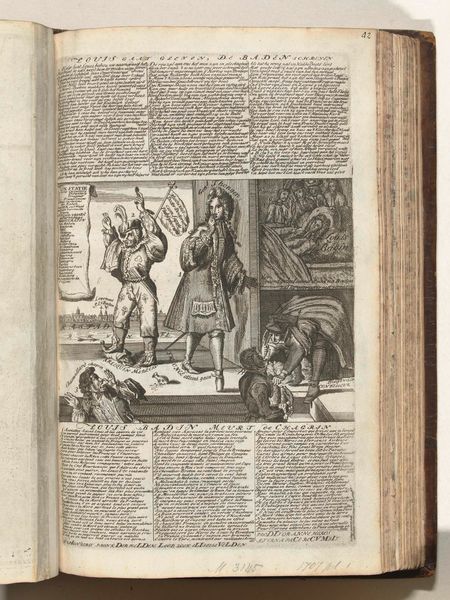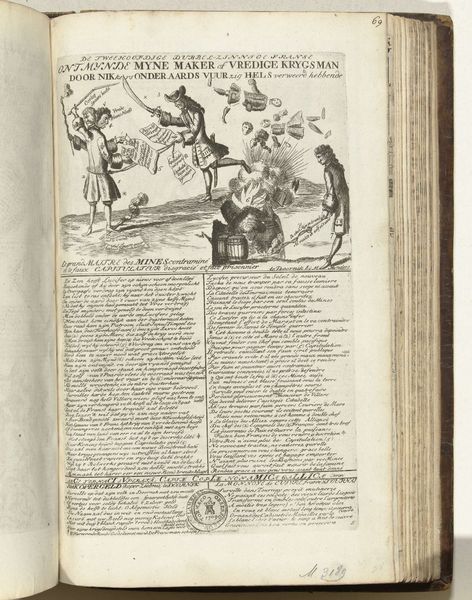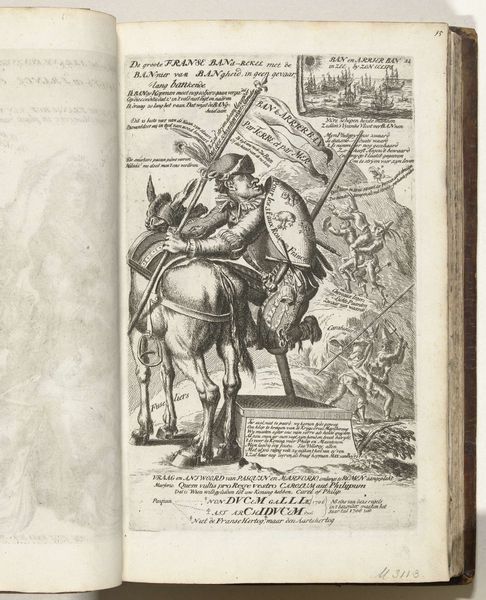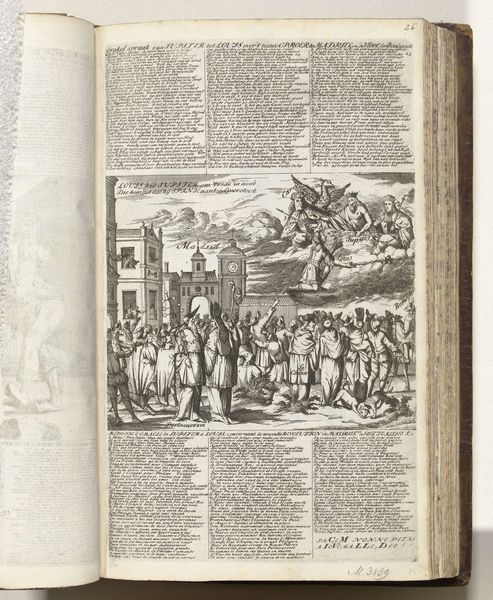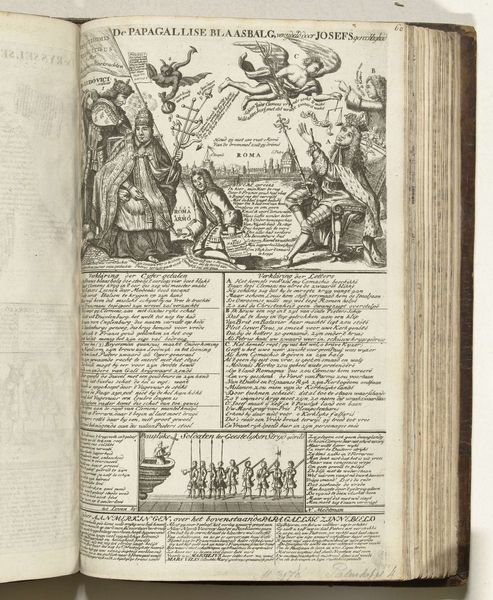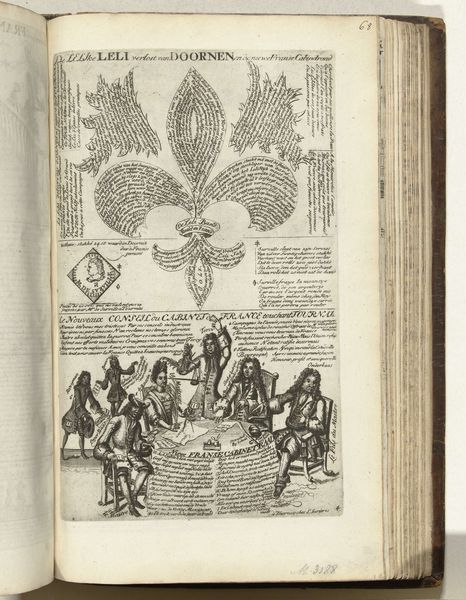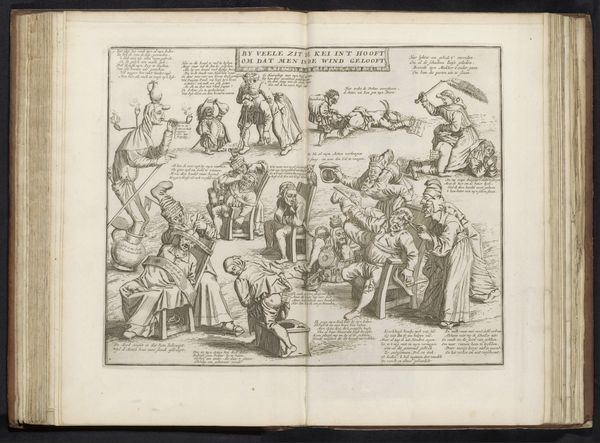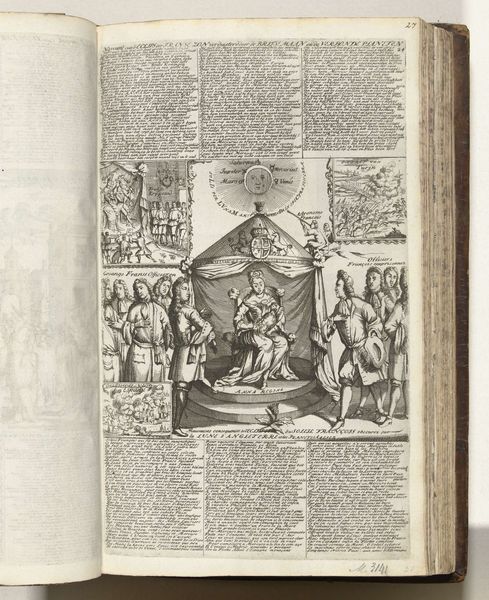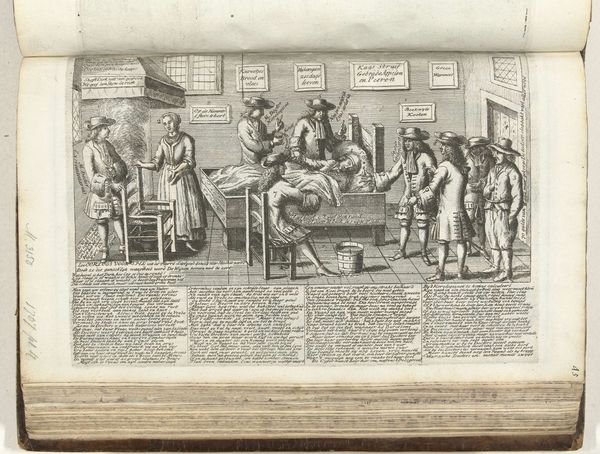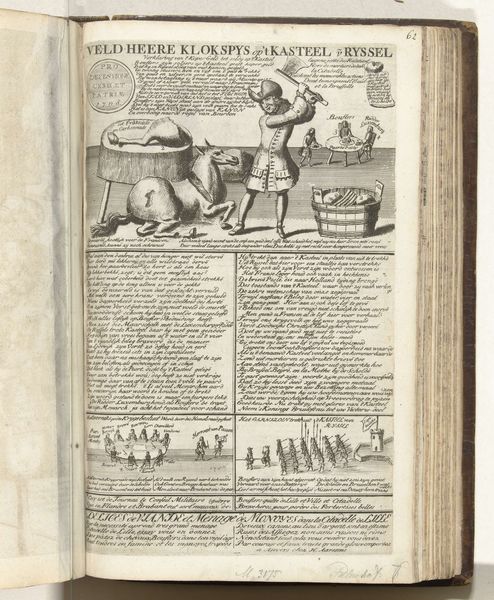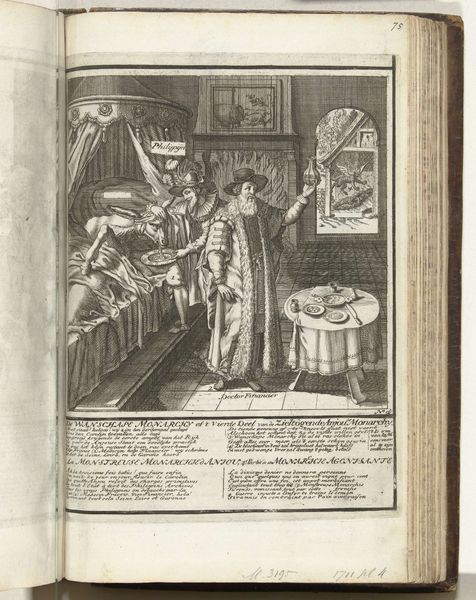
Villeroy en de keurvorst van Beieren knielen voor Lodewijk XIV, 1706 1706
0:00
0:00
print, engraving
#
portrait
#
baroque
# print
#
figuration
#
history-painting
#
engraving
Dimensions: height 315 mm, width 200 mm
Copyright: Rijks Museum: Open Domain
Curator: This engraving, dating back to 1706, is titled "Villeroy en de keurvorst van Beieren knielen voor Lodewijk XIV," which translates to "Villeroy and the Elector of Bavaria Kneeling Before Louis XIV." The piece is currently held in the collection of the Rijksmuseum. Editor: It strikes me as rather busy, almost chaotic. The composition seems incredibly dense with figures, text, and symbolic elements, and the monochromatic palette accentuates this visual complexity. The texture looks coarse due to the engraving technique. Curator: The chaos, as you call it, reflects the political and social turmoil of the period. It portrays a specific historical moment—likely a depiction of subservience to Louis XIV—and the artist uses caricature and text to express a political commentary. It would be interesting to dive into what publications carried the work or if this image had some other historical value that we have now forgotten. Editor: Visually, I am particularly interested in the distribution of light and shadow, especially the dramatic illumination around the figure of Louis XIV compared to the somewhat subdued depiction of the kneeling figures. The dynamic lines etched into the metal to give it that depth are magnificent. Also the way all of the papers seem to circle around and through Louis is of interest, giving him this seat of honor made up of paper. I see a pattern or sense of the paper and document building the importance of Louis, literally through construction of him out of the information. Curator: Indeed, the light is employed as a clear indicator of power and status. This is further emphasized by the text interwoven with the image—presumably detailing Louis XIV's greatness and the supplicants' acknowledgements. The work reflects a culture grappling with authority, power dynamics, and perhaps the emerging power of media and visual propaganda. Editor: Looking closer, I think the text's visual integration becomes more apparent the longer one gazes upon it. It encircles each figure, almost as if weaving meaning around them like a tailored coat. It’s cleverly done how, from afar, they become textural patterns contributing to the work's design but closer up they function independently. Curator: It speaks to the multifaceted roles art played at that time—simultaneously informative, propagandistic, and aesthetically driven. We need to consider the broader European context in which such depictions of power were consumed. Editor: After this brief reflection, I noticed how many different kinds of elements or concepts are contained within the borders of the engraving; to consider this historical object and how it portrays that complexity gives a glimpse of life and history, all within that small framed world. Curator: Ultimately, this engraving invites us to contemplate how power is visualized, narrated, and consumed within a society steeped in political and social upheaval, offering critical insights into the era’s collective mindset and propaganda apparatus.
Comments
No comments
Be the first to comment and join the conversation on the ultimate creative platform.

